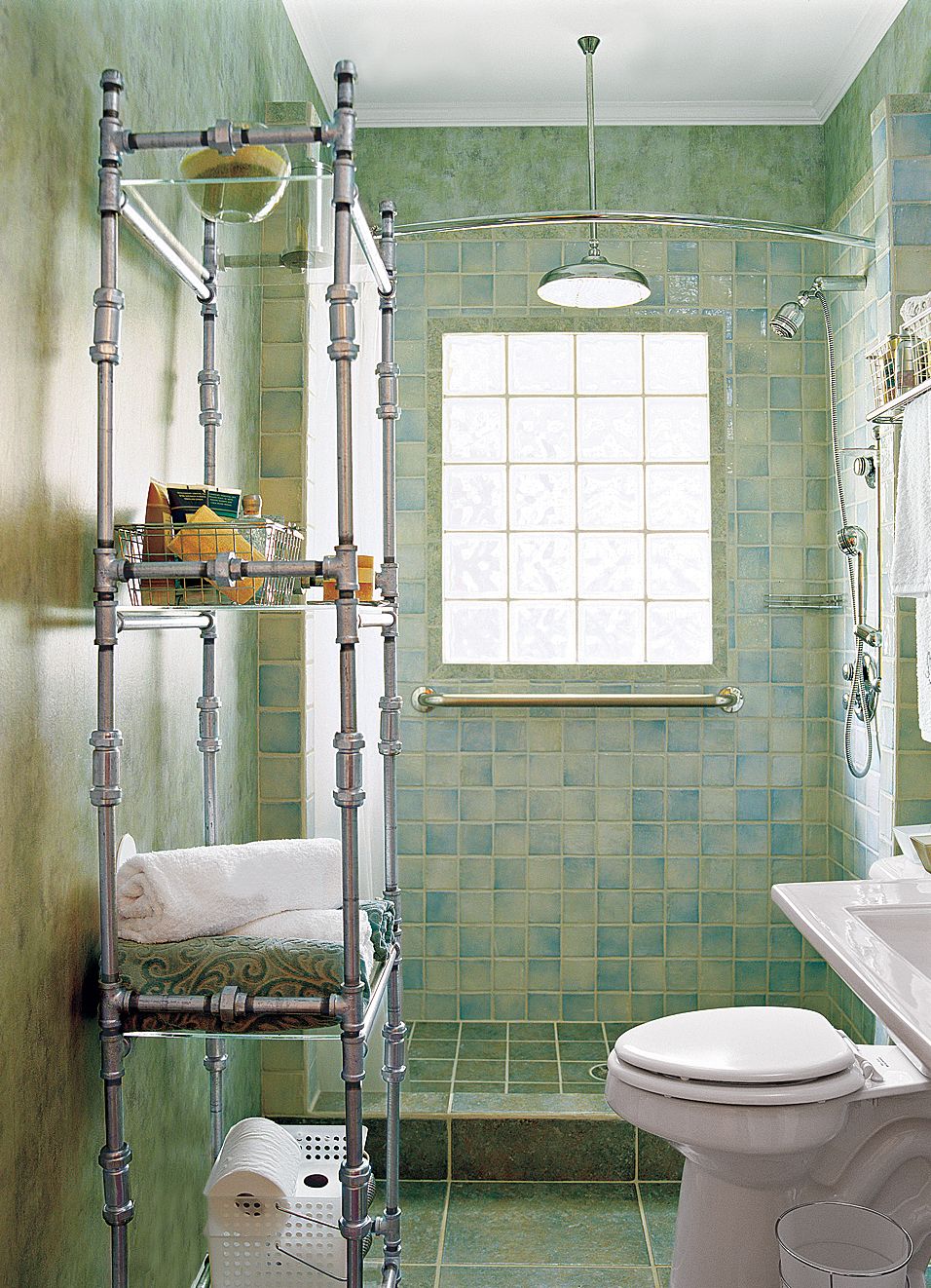When you’re remodeling a small bathroom, every inch counts. From choosing the right layout and fixtures to maximizing storage and creating the illusion of spaciousness, every decision carries extra weight. We rounded up our favorite small bathroom ideas and remodeling tips to inspire your tiny bathroom transformation.
How Do You Remodel a Small Bathroom?
Limited space is the most obvious challenge when remodeling a small bathroom. Squeezing in all the essential fixtures while leaving enough space for movement can be tricky. You also have to be more mindful of your design choices. Too many patterns, colors, or fixtures can overwhelm a small space, making it feel even smaller.
Streamlined fixtures, light colors, and an efficient layout can make a small bathroom feel larger. However, older plumbing and electrical systems might restrict your options for relocating fixtures or adding new features.
Regardless of size, all bathrooms must include certain essential elements and meet certain codes. Keep the following factors in mind as you plan your small bathroom remodel.
- Electrical safety: Ground-fault circuit interrupters (GFCIs) are required by code to protect receptacles in wet areas, such as bathrooms and kitchens. GFCIs quickly break the circuit, which can prevent a potentially fatal shock from a blow-dryer or electric shaver.
- Lighting: Bathrooms need both ambient lighting, including a waterproof fixture above the tub or shower, and task lighting around the vanity mirror. Recessed ceiling lights or flush-mount fixtures can provide ambient light without making the room feel cramped. Adjustable fixtures eliminate shadows and steer clear of unflattering fluorescent lights.
- Load-bearing walls: If your remodel involves removing or altering walls, consult a structural engineer to determine if any are load-bearing. Removing a load-bearing wall without proper support can compromise the structural integrity of your home.
- Minimum space requirements: A full bath typically needs at least 36-40 square feet, with a minimum of 5 feet in one direction to accommodate a tub. Showers should be at least 32×32 inches—but bigger is better, if you have the space. Just make sure the shower is large enough so you can comfortably raise your arms and bend over in the space.
- Plumbing: Hire a licensed plumber to handle any plumbing work. This helps with proper installation and compliance with local codes, preventing leaks and other issues down the line.
- Toilet design: Low-flow toilets, which use no more than 1.6 gallons of water per flush, are required by law in all new and remodeled baths. Make sure there’s sufficient space around the toilet for comfortable access—ideally, at least 16 inches from the centerline of the toilet and walls or fixtures on either side. Also, allow at least 30 inches from the front of the toilet to the nearest object.
- Ventilation: Proper ventilation will prevent moisture from getting trapped in the bathroom, which can lead to mold and mildew growth. We recommend installing a ducted exhaust fan with a timer to remove humid air effectively. When choosing a bathroom exhaust fan, pay attention to the cubic feet per minute of air it moves.
Be sure to address these structural and safety considerations on the front end, before you start demolishing walls and picking out tiles. Careful planning will ensure your bathroom is not only beautiful but also safe and functional.
15 Ways To Make Your Small Bathroom Feel More Spacious
If you need some visual inspiration, here are 15 creative ways to make your small bathroom feel more spacious and inviting.
1. Install a Pocket Door
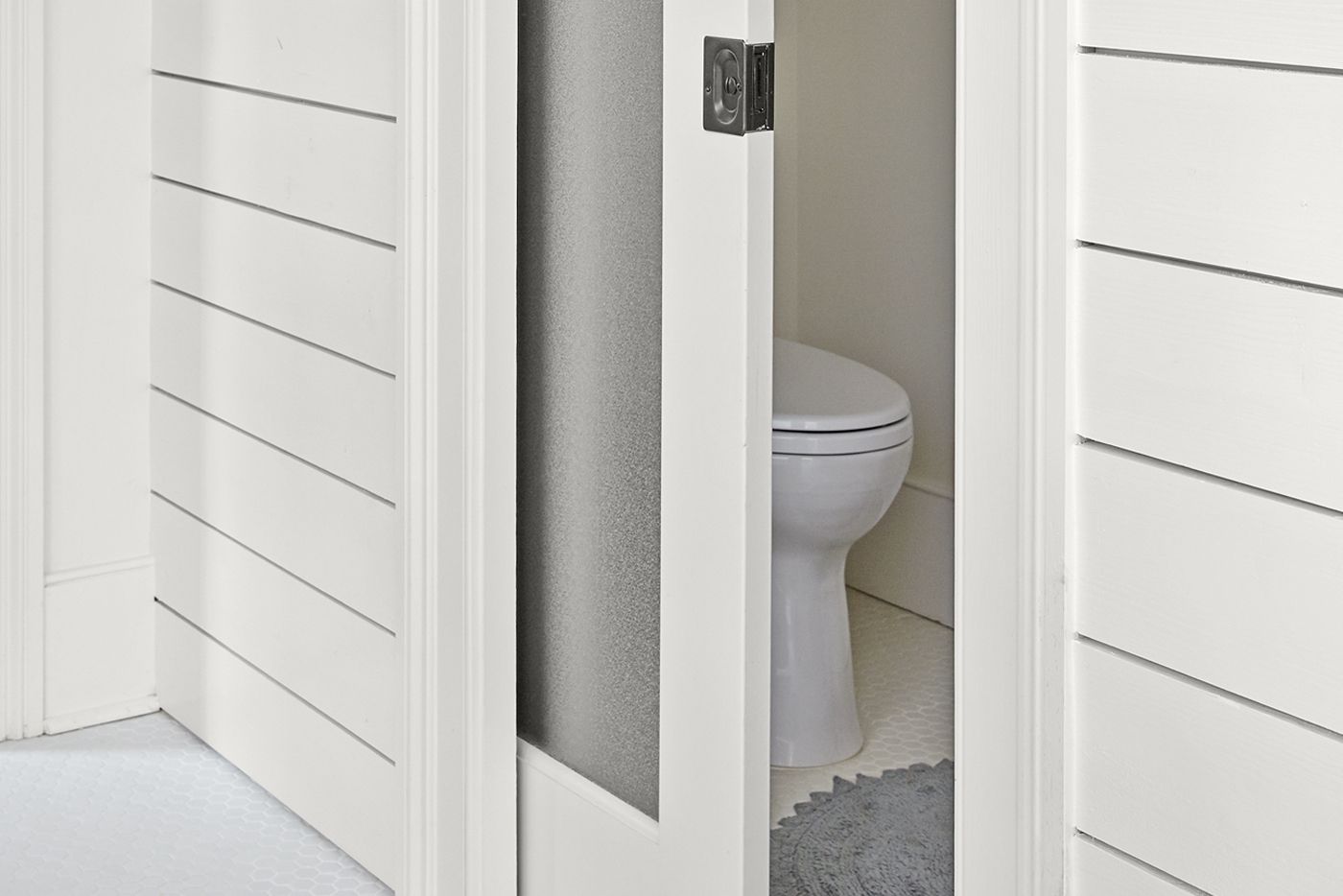
A traditional swing door can make a small bathroom feel even more cramped. Luckily, there are several door alternatives that can save space and add a touch of style to your bathroom—such as pocket doors.
Rather than opening inward, pocket doors slide into a cavity in the wall. This creates more usable space in the bathroom by eliminating the need to accommodate a door swinging inward. For a luxurious touch, install soft-close mechanisms for smooth, quiet operation.
2. Try a Glass Shower
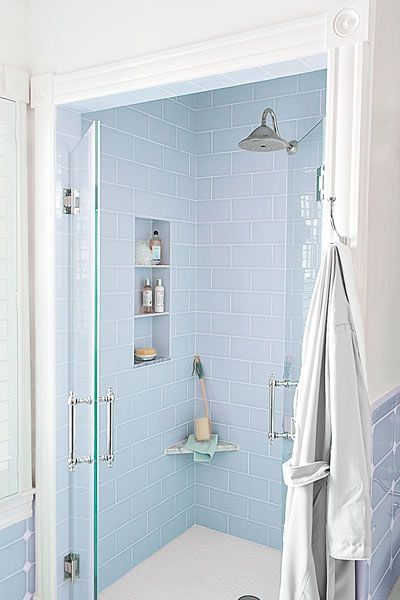
Clear glass shower doors create the illusion of more space by eliminating visual barriers. This design choice allows light to flow freely throughout the bathroom, making the entire space feel more open and airy. If you aren’t comfortable with crystal-clear doors, frosted or textured glass help add privacy.
3. Save Space With the Toilet
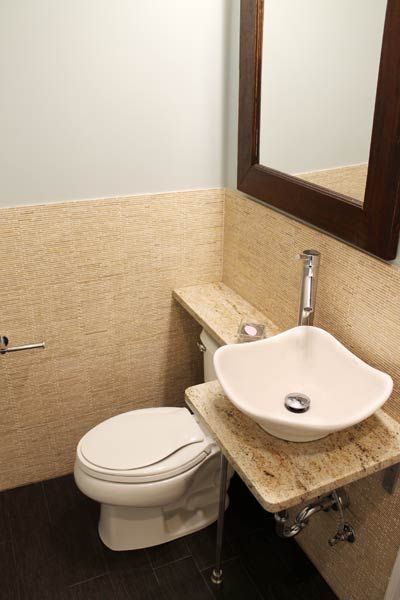
There are several ways to save space through your choice of toilet. Some toilets are mounted directly to the wall, with the tank hidden inside the 2×6 stud wall. This design gives you an extra nine inches of floor space and creates a sleek, modern look. Another option is to create a wall niche for your toilet, which will reduce its footprint. Corner toilets are ideal for maximizing space in small bathrooms with awkward layouts.
4. Add Bigger Windows for More Light
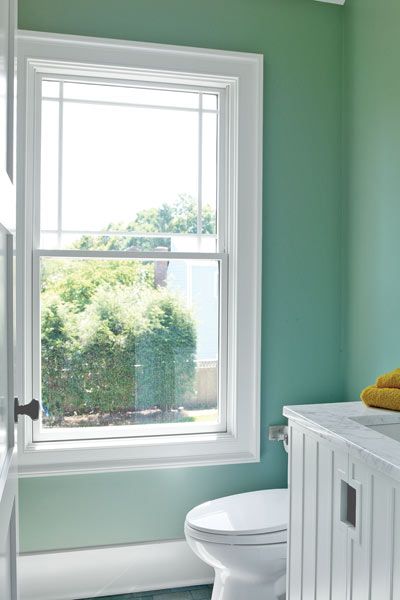
Expanding an existing window gives a dark bathroom the look of a spa-like solarium. This will brighten the space and create a sense of openness and connection with the outdoors. If feasible, install a skylight to visually expand the space and bring a little luxury in simultaneously.
If you want a window treatment, choose sheer curtains or blinds that allow natural light to filter through. Alternatively, plantation shutters or frosted film can offer privacy without sacrificing light.
5. Opt-In or Out on Pedestal Sinks
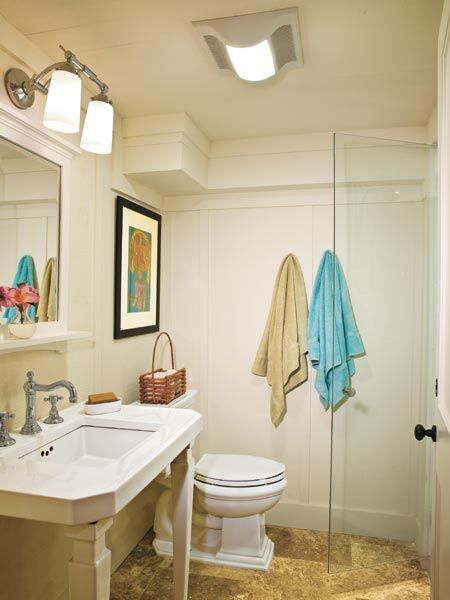
Pedestal sinks can be both space-savers and space-wasters, depending on your bathroom’s layout and storage needs. If you want to open up floor space, they’re an excellent choice. However, they don’t offer the storage that vanity cabinets provide.
If you choose a pedestal sink, add open shelves or a tile-lined niche nearby for storage. Alternatively, use shallow cabinetry (16 or 18 inches deep instead of the standard 21 inches) to maximize floor space while still providing storage.
6. Work With Large Mirrors
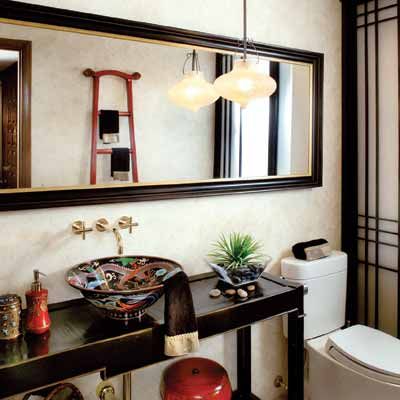
In small spaces, lighter and brighter is often better. A single large mirror can create a clean look with minimal visual clutter while also reflecting light and making the space appear larger. Extend the mirror from wall to wall above the vanity for maximum impact. Adding a frame can enhance the aesthetic, giving a polished, finished look.
7. Employ Optical Illusions To Enhance Space
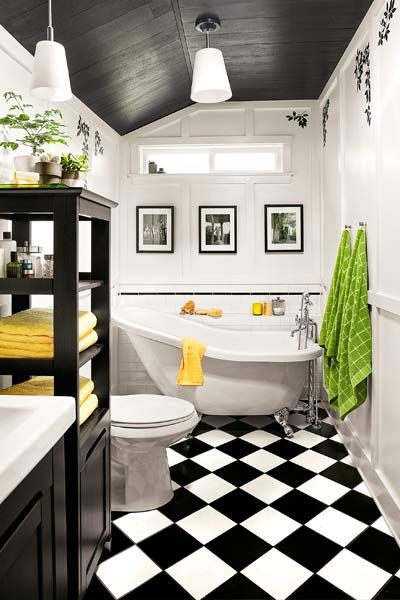
Large-scale patterns on wallpaper or tiles can make a space feel more substantial and simultaneously add visual impact, tricking the eye into perceiving a larger space. For instance, black and white checkerboard tiles can stretch out the narrow design of a small bath. Just be sure to use these large patterns sparingly, such as on an accent wall or in the shower, to avoid overwhelming the room.
8. Install a Space-Saving Small Sink
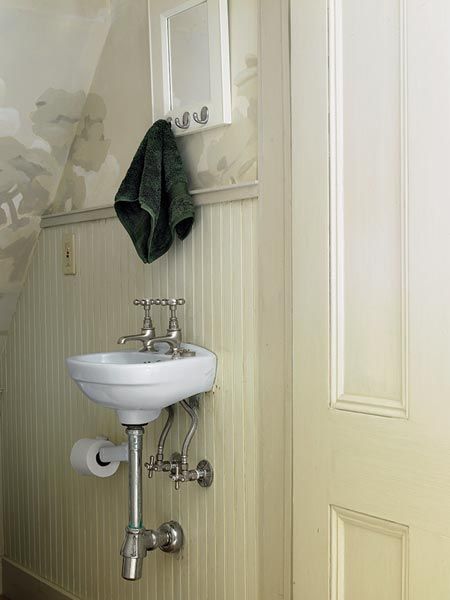
A sink is one of the areas where you can sacrifice some space, especially in a powder room or half-bath where you don’t need a counter or under-sink storage. Wall-mounted sinks free up floor space and create a more open feel, while corner sinks make use of often-underutilized corner space. Trough sinks are another space-saving option. These long, narrow sinks can fit in tight spaces while still doing everything you need them to.
9. Bump Up the Size With Sophisticated Paneling
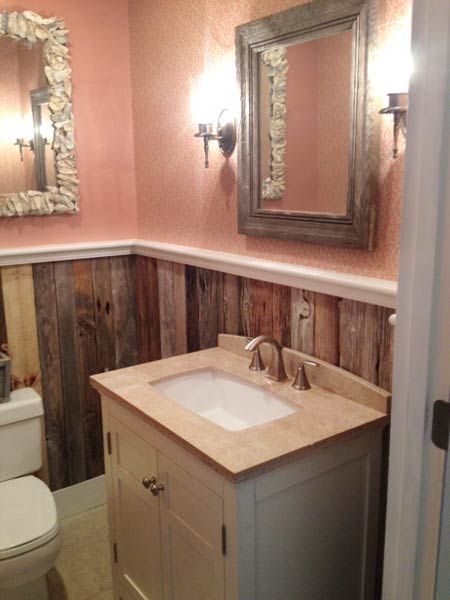
Draw the eye upward with vertical lines to create the illusion of height in a small bathroom. Shiplap paneling installed vertically can distract from a bath’s tiny footprint while providing extra flair. Use reclaimed boards or new materials that mimic the look of weathered wood for a touch of character. Pairing this with light, neutral paint can further enhance the sense of space.
10. Create Clever Built-in Bath Storage
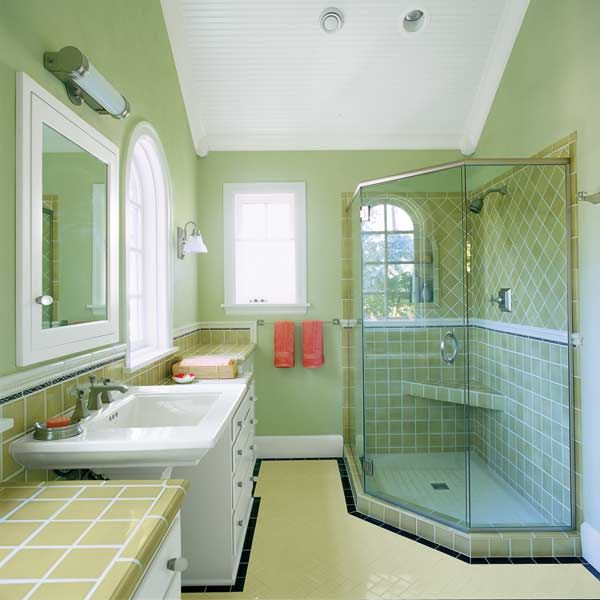
Maximize storage without sacrificing floor space by incorporating built-in solutions. For instance, you can carve out niches in the walls to create built-in shelves or cubbies for storing toiletries, towels, and decorative items. Similarly, a recessed medicine cabinet offers hidden storage behind a mirrored door, keeping essentials within reach while maintaining a clean aesthetic.
Custom-built cabinetry can be tailored exactly to your needs. Use light colors and mirrored finishes to keep the space feeling open.
11. Rely on Horizontal Lines
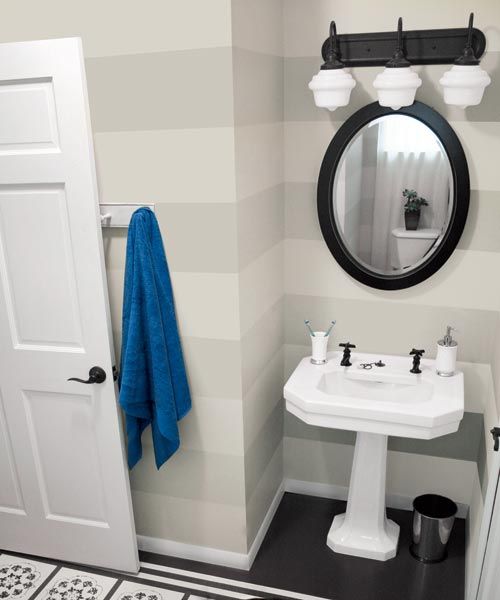
Horizontal stripes are a no-brainer for visually widening a room. This classic paint job can transform a small bath with a few gallons in an afternoon. If you don’t want to make the entire room striped, opt for an attractive accent wall instead. You can create a striped effect with alternating tile colors or install horizontal wainscoting panels for a traditional look.
12. Make a Romantic All-Black Bath
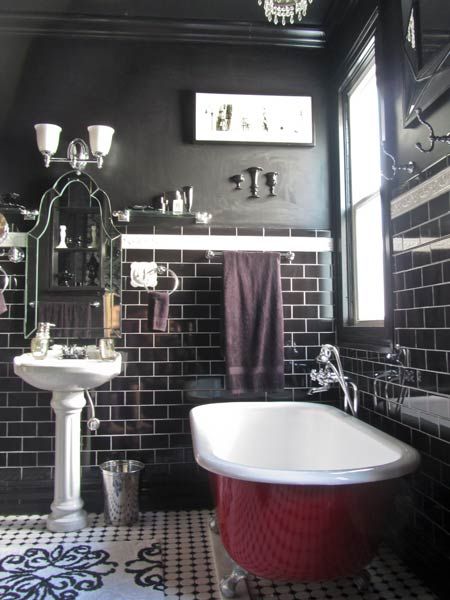
For a modern bathroom with dramatic flair, consider an all-black decorating scheme. Just be sure to incorporate a few contrasting elements, such as the white pedestal sink and deep red clawfoot tub in the picture above, to prevent the space from feeling too dark or cramped.
Mixing matte and glossy finishes can add more depth to the dark palette, ensuring the space doesn’t feel flat. We also recommend brass or chrome fixtures to reflect light and add warmth.
13. Try a Tiled Vanity Top
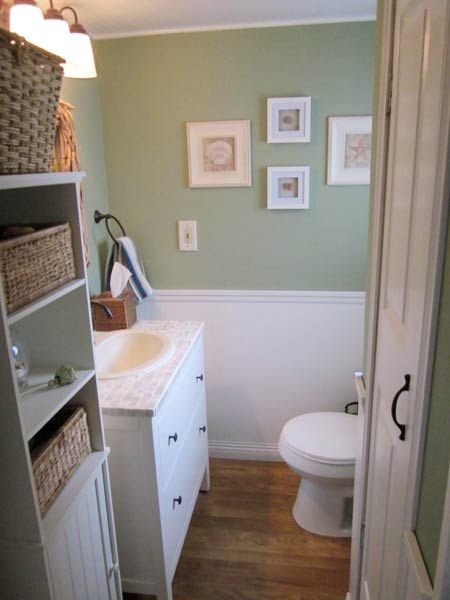
Instead of traditional countertop materials, think about a tiled vanity top. This budget-friendly option adds texture and interest to a small space. Choose tiles that complement your overall design scheme and extend them up the wall for a cohesive look. Mosaic tiles can provide intricate details without overwhelming the space.
14. Have a Chair Rail Double as Shelving
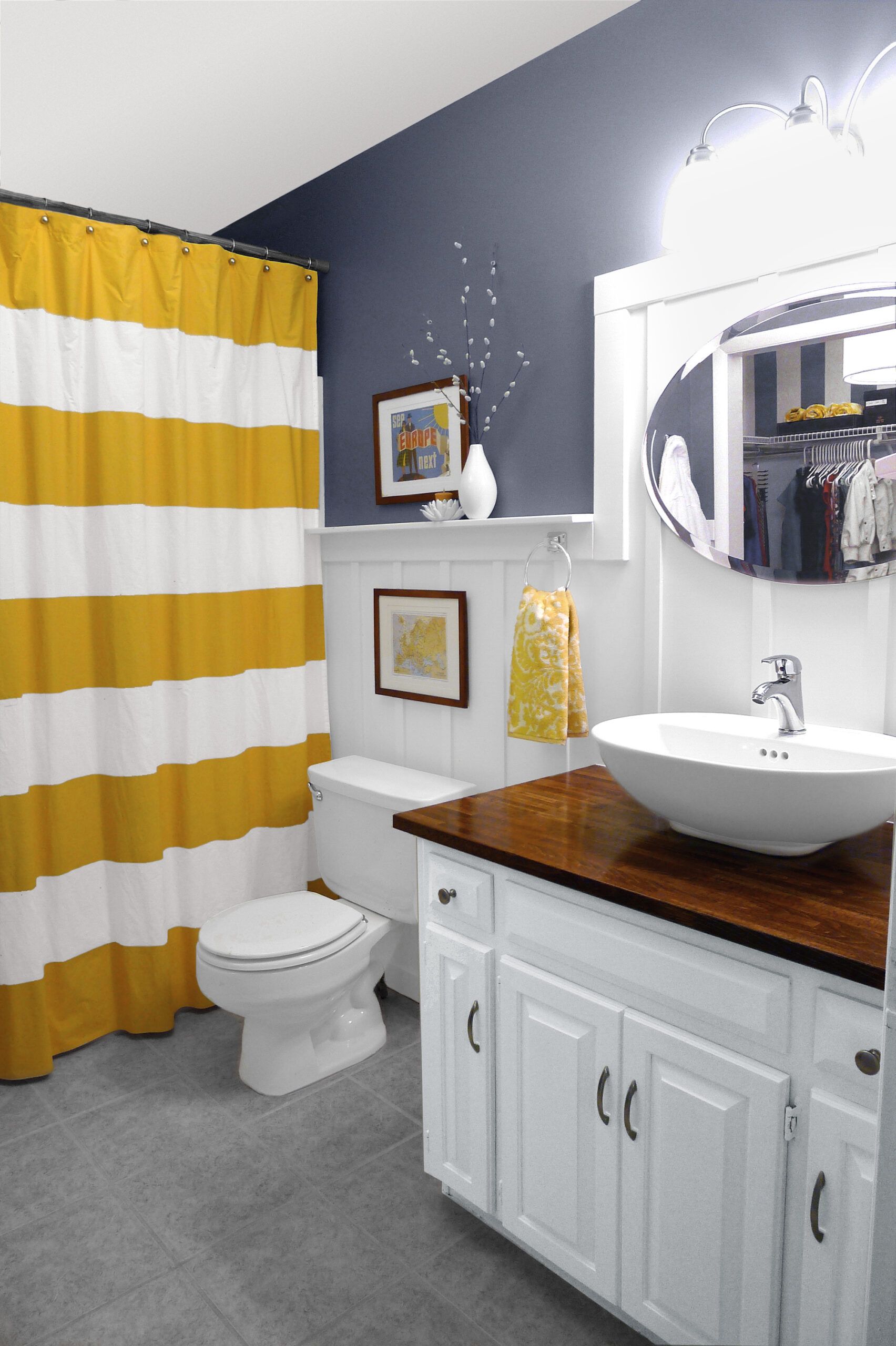
Make room for frequently used items by installing a generous chair rail atop wainscoting. A shelf-like chair rail can also display a few small decorative items. Opt for materials that match or complement your bathroom’s aesthetic.
You can also install shelves or cabinets above the toilet tank to create additional storage without sacrificing floor space. This is an ideal spot for storing extra towels, toilet paper, and other bathroom essentials.
15. Embrace Shaped Tiles
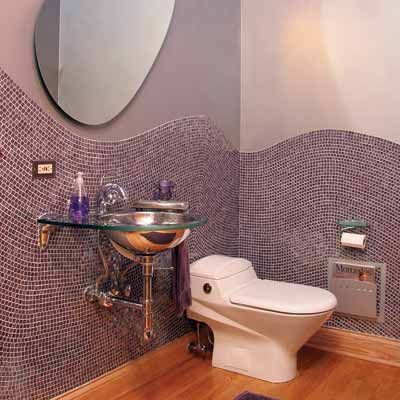
Geometric or uniquely shaped tiles add visual interest and create a focal point that distracts from the room’s small size. The curved, interlocking shapes or arabesque tiles add a touch of elegance, while fish scale tiles create a whimsical, oceanic feel. Hexagonal tiles also work well. If total wall coverage seems too extreme, use shaped tiles for a wainscot or accent wall to add drama without overwhelming the space.
Our Conclusion
Remodeling a small bathroom doesn’t have to be daunting. By embracing the unique challenges and opportunities that come with a compact space, you can create a bathroom that is not only functional and stylish but also feels surprisingly spacious.
From clever layout configurations and space-saving fixtures to creative storage solutions and visual tricks, there are countless ways to maximize your small bathroom’s potential. Remember, every design decision matters, so take the time to carefully mull your options and choose the solutions that best suit your needs and preferences.
